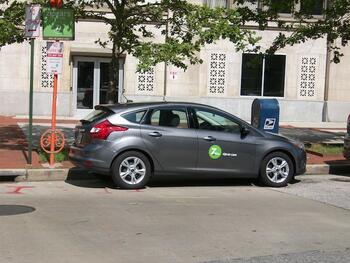
Four years ago, Zipcar co-founder Robin Chase wrote, or led the effort to write, ten principles of shared mobility for livable cities. Despite a patina of social justice and green values, these principles were a transparent effort to give her company and companies like hers a huge economic advantage by limiting and eventually forbidding the use of privately owned vehicles in cities.
Read or download a copy of the brief here.
Recently, someone asked me for my response to these principles. While my reply is on page 5 of the PDF, my main response is to offer my own mobility principles. These principles apply to urban and rural areas, to the United States and other countries, and to all forms of transportation. I’ve previously stated most of these principles in various Antiplanner posts, but this one brings them together.
- The User-Pays Principle
The vast majority of benefits from transportation accrue to the users, so they should pay the costs. Limiting transportation funding to amounts that users are willing to pay protects against optimism bias, wasteful megaprojects, and the construction of speculative projects that make little economic sense. While there may be some side benefits to transportation, there are side benefits to everything, but that doesn’t mean everything should be subsidized.
The Rent-Seekers’ Corollary to the User-Pays Principle is that, once a precedent is made to subsidize some form of transportation, rent seekers (i.e., subsidy seekers) will come out of the woodwork to fabricate reasons why they, too, should be subsidized, and such subsidies will soon spin out of control. That’s how subsidies to urban transit, sometimes justified to offset subsidies to auto drivers, have grown to be more than 100 times as much, per passenger-mile, as subsidies to highway users.
- The Infrastructure Principle
The United States has 4 million miles of roads, 160,000 miles of railroads, and 15,000 airports. The Infrastructure Principle holds that any transportation technology that requires its own dedicated infrastructure will not be able to compete against highways, airlines, and freight railroads because the cost of building enough infrastructure to make the technology useful and the risk that the technology will fail to cover its costs will both be too great. High-speed rail, magnetically levitated trains, hyperloop, monorails, light rail, and similar technologies are all pipe dreams that make no economic sense.
Even if the United States didn’t already have roads, railroads, and airports, the Dumb Infrastructure Corollary holds that the infrastructure that is most likely to succeed is infrastructure that can be used by a wide variety of kinds of transportation. Roads can be used by pedestrians, cyclists, automobiles, motorcyclists, trucks, and buses. Airports can be used by jets, propeller planes, helicopters, passenger planes, and cargo planes. High-speed rail, maglev, and hyperloop all require dedicated vehicles and the first two, at least, only work for passengers.
- The Law of Large Proportions
Coined by economist Charles Lave, this principle was described by him as “the biggest components matter most.” In transportation, this applies to negative externalities: Efforts to save energy, eliminate pollution, or reduce other transportation externalities will be more effective if applied to the most common forms of transportation.
Since Americans travel by auto almost a hundred times as many passenger miles per year as by transit, improving the energy efficiency of automobiles by 1 percent will do more to save energy and reduce pollution than trying to double the amount of transit ridership (especially since most transit systems use more energy per passenger-mile than the average car). Since Americans travel by air more than a hundred times as many passenger miles per year as by intercity passenger trains, improving the energy efficiency of airlines will do more to save energy than trying to increase Amtrak ridership (especially since Amtrak uses almost as much energy per passenger-mile as commercial aircraft).
Read the rest of this piece at The Antiplanner.
Randal O’Toole, the Antiplanner, is a policy analyst with nearly 50 years of experience reviewing transportation and land-use plans and the author of The Best-Laid Plans: How Government Planning Harms Your Quality of Life, Your Pocketbook, and Your Future.
Photo credit: Deanlaw via Wikimedia under CC 3.0 License.












